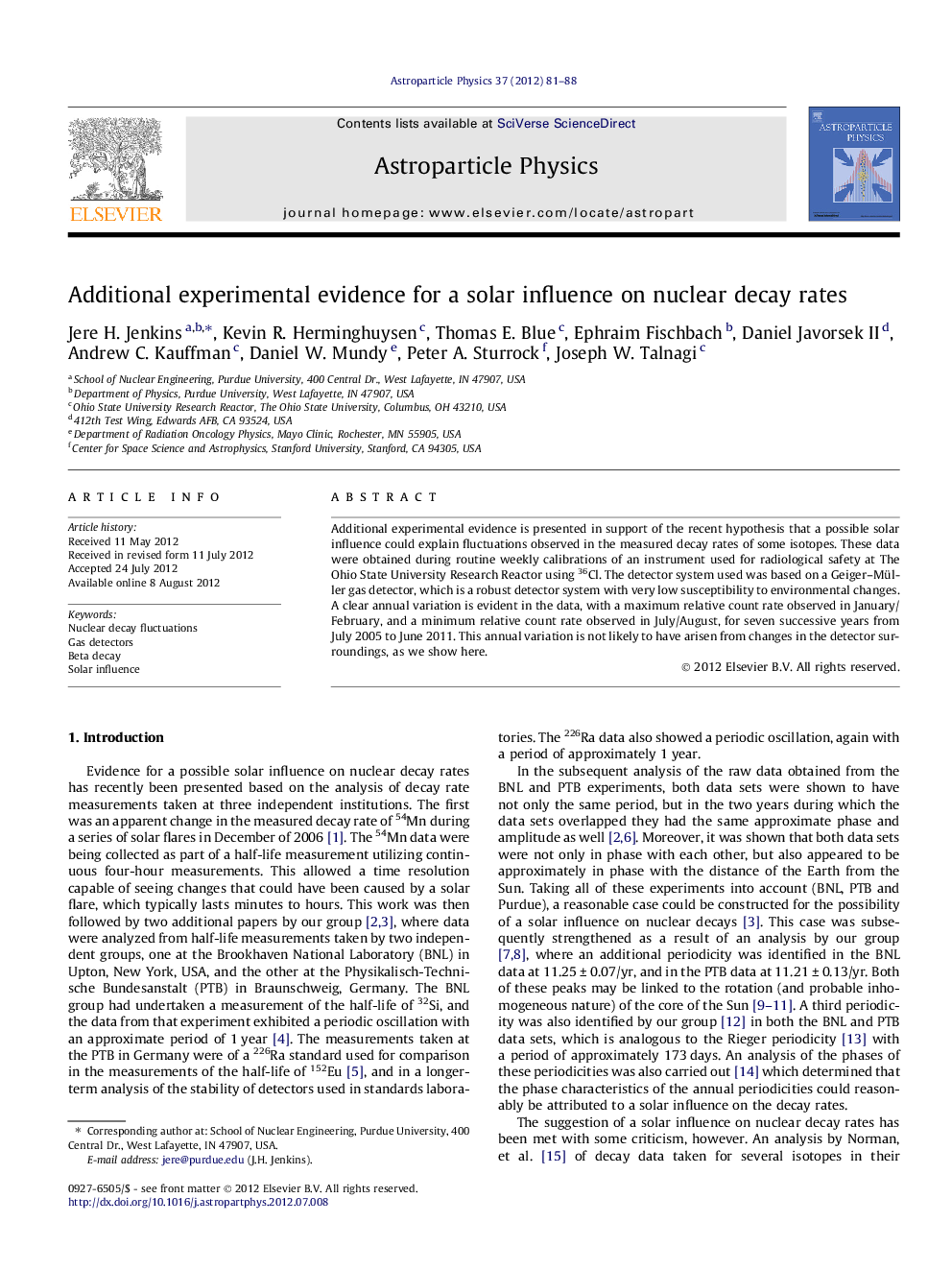| Article ID | Journal | Published Year | Pages | File Type |
|---|---|---|---|---|
| 1770819 | Astroparticle Physics | 2012 | 8 Pages |
Additional experimental evidence is presented in support of the recent hypothesis that a possible solar influence could explain fluctuations observed in the measured decay rates of some isotopes. These data were obtained during routine weekly calibrations of an instrument used for radiological safety at The Ohio State University Research Reactor using 36Cl. The detector system used was based on a Geiger–Müller gas detector, which is a robust detector system with very low susceptibility to environmental changes. A clear annual variation is evident in the data, with a maximum relative count rate observed in January/February, and a minimum relative count rate observed in July/August, for seven successive years from July 2005 to June 2011. This annual variation is not likely to have arisen from changes in the detector surroundings, as we show here.
► We report recent data from 36Cl, which show an annual periodicity. ► Data were collected on a Geiger–Müller detector, which are known to be robust. ► Environmental factors can be excluded as the cause of the periodicity. ► Results support previously reported results from 36Cl and other isotopes. ► Results support possible solar influence on nuclear decays.
